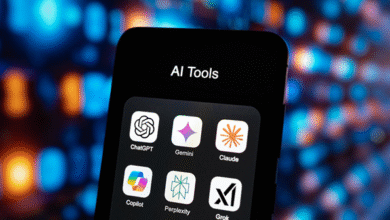AI-Powered Workforce Solutions

The nature of work is changing faster than most companies can respond. People are no longer tied to static roles, rigid hierarchies, or one-size-fits-all career paths. Skills shift rapidly. New priorities emerge. Talent needs to move with the pace of business, not lag behind it. In response, organizations are rethinking how they manage human capital, moving from static job descriptions to dynamic skills-based strategies. This shift requires more than updated HR policies. It demands intelligent systems that can map capabilities, recommend actions, and help people grow where they’re needed most. Read on to see how artificial intelligence is powering a smarter, more adaptive approach to workforce management.
Matching People to Work in Real Time
Traditional staffing models assume roles are fixed and job descriptions rarely change. But real business problems don’t wait for org charts to catch up. Teams often need short bursts of expertise, unique combinations of skills, or fast redeployment during new initiatives. That’s where AI makes the difference.
Machine learning systems can scan internal talent databases and identify hidden capabilities. Instead of relying on resumes or outdated titles, these systems match people to work based on real skills, recent experiences, and growth potential. Someone in customer success might be perfect for a cross-functional product beta, or an analyst might be ready to step into a leadership role temporarily.
This doesn’t just improve productivity—it improves inclusion. People from underrepresented groups often don’t raise their hands for new opportunities due to bias or visibility issues. AI recommendations help level that field, surfacing qualified candidates based on skill match, not self-promotion.
The benefit to business is faster staffing, better-fit project teams, and less disruption when priorities shift. The benefit to employees is visibility, access, and meaningful career movement without waiting years for a promotion.
Skills, Not Titles, as the Talent Currency
Skills change faster than roles. A marketing manager today might need data literacy, customer experience strategy, and automation skills that weren’t part of the job five years ago. Meanwhile, a finance leader may need fluency in sustainability metrics and scenario modeling. Roles evolve. Skills stack. And workers need systems that reflect that complexity.
AI-enabled platforms help organizations track which skills exist in the workforce, where gaps are forming, and how to close them with precision. These systems go beyond static checklists. They analyze project outcomes, training history, peer endorsements, and even unstructured data like feedback or notes to create a real-time picture of talent readiness.
This insight allows companies to shift learning investments from general training to targeted upskilling. Instead of guessing what a team needs, leaders can see where emerging tech or new customer demands are pushing them and prepare accordingly.
Employees also benefit. They can explore learning paths aligned with company goals, get credit for what they already know, and see how specific skills will unlock their next internal opportunity. That visibility makes career development more personalized and more motivating.
When businesses prioritize skills over titles, they unlock flexibility, accelerate growth, and build future-ready teams from the inside out.
Internal Mobility as a Strategic Advantage
Hiring externally is expensive, slow, and often risky. But internal talent marketplaces—powered by AI—let organizations solve resource challenges from within. These platforms act like internal gig boards or opportunity hubs, connecting employees to part-time projects, mentorships, lateral moves, and new full-time roles.
The advantage of using AI is scale and relevance. Instead of posting opportunities and hoping the right person applies, the system actively recommends matches based on availability, interest, and qualification. It also alerts managers when a team member might be a strong fit for something outside their current role.
This proactive approach keeps talent moving. It also reduces attrition. People leave companies when they don’t see a path forward. By making those paths visible, without waiting for a manager’s approval, employees feel empowered and supported in their growth.
For the organization, internal mobility builds resilience. When a sudden project arises or a region needs support, the company already knows who’s ready to step in. That agility is key to navigating economic shifts, mergers, or competitive threats.
It’s not about moving people constantly. It’s about giving them options—and letting the business benefit from their full potential.
Career Development Backed by Insight
Career development has often relied on annual reviews, guesswork, and generic advice. But AI can personalize this journey, using actual data to suggest next steps based on where an individual is and where they want to go.
These systems analyze an employee’s skill profile, previous roles, learning progress, and even peer networks to offer tailored recommendations. That might include a relevant learning module, a short-term assignment to build a specific skill, or a mentor who’s walked a similar path.
This targeted support replaces vague check-ins with specific milestones. It also shifts ownership of growth from managers to individuals, while still keeping leadership in the loop.
Transparency is key. Employees need to see how roles are evolving, which skills are in demand, and how they stack up. AI makes that visible, with clear maps that show what’s needed to move into a new role or take on bigger responsibilities.
The result is a career path that feels actionable, aligned, and responsive—not a vague aspiration or a yearly formality.
Organizational Intelligence in Motion
When AI connects talent data, learning pathways, project needs, and business goals, it creates something bigger than workforce management. It creates a living talent ecosystem—where the right people find the right work at the right time.
This system gives leaders real-time insights into organizational health. Are certain teams overloaded? Are new hires integrating fast enough? Where are skills missing, and how are they trending across business units? These answers no longer live in spreadsheets or scattered reports—they’re accessible, visual, and dynamic.
Executives can also model different futures. What happens if we shift 10% of resources to innovation? Which teams are best suited for a new product launch? What internal moves would help us retain top performers in a downturn? AI doesn’t make the decisions, but it gives leaders better information, faster.
And because these systems evolve with use, the intelligence compounds. Every move, every outcome, and every success feeds back into the platform, making future recommendations sharper and more useful.
This isn’t just automation—it’s augmentation. Humans still lead. But they lead with tools that reveal what’s possible before the opportunity passes.
Organizations rethinking how they align people, skills, and strategy are beginning to explore platforms like Gloat, where artificial intelligence helps unlock workforce agility and continuous transformation.




